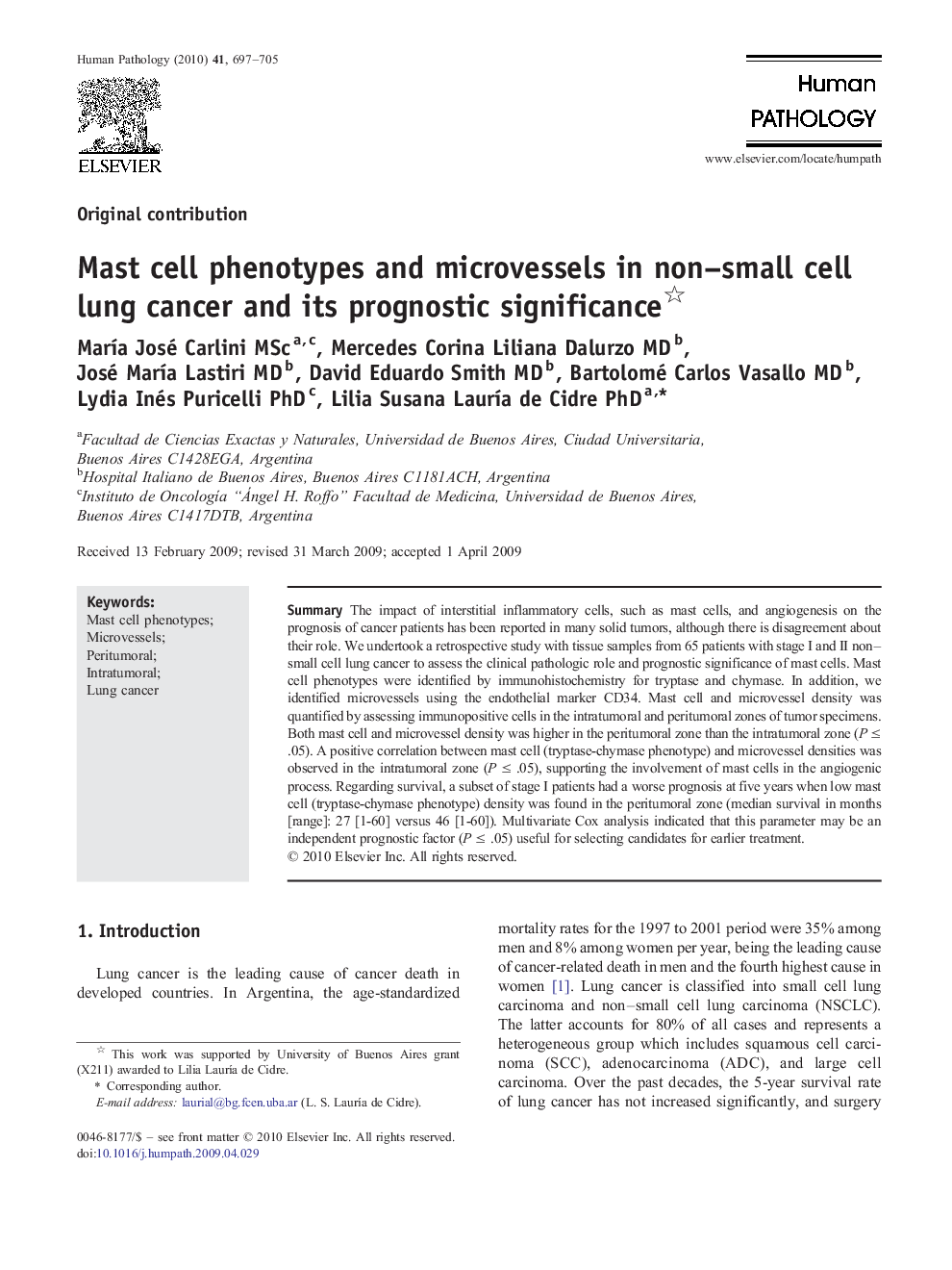| Article ID | Journal | Published Year | Pages | File Type |
|---|---|---|---|---|
| 4133919 | Human Pathology | 2010 | 9 Pages |
SummaryThe impact of interstitial inflammatory cells, such as mast cells, and angiogenesis on the prognosis of cancer patients has been reported in many solid tumors, although there is disagreement about their role. We undertook a retrospective study with tissue samples from 65 patients with stage I and II non–small cell lung cancer to assess the clinical pathologic role and prognostic significance of mast cells. Mast cell phenotypes were identified by immunohistochemistry for tryptase and chymase. In addition, we identified microvessels using the endothelial marker CD34. Mast cell and microvessel density was quantified by assessing immunopositive cells in the intratumoral and peritumoral zones of tumor specimens. Both mast cell and microvessel density was higher in the peritumoral zone than the intratumoral zone (P ≤ .05). A positive correlation between mast cell (tryptase-chymase phenotype) and microvessel densities was observed in the intratumoral zone (P ≤ .05), supporting the involvement of mast cells in the angiogenic process. Regarding survival, a subset of stage I patients had a worse prognosis at five years when low mast cell (tryptase-chymase phenotype) density was found in the peritumoral zone (median survival in months [range]: 27 [1-60] versus 46 [1-60]). Multivariate Cox analysis indicated that this parameter may be an independent prognostic factor (P ≤ .05) useful for selecting candidates for earlier treatment.
